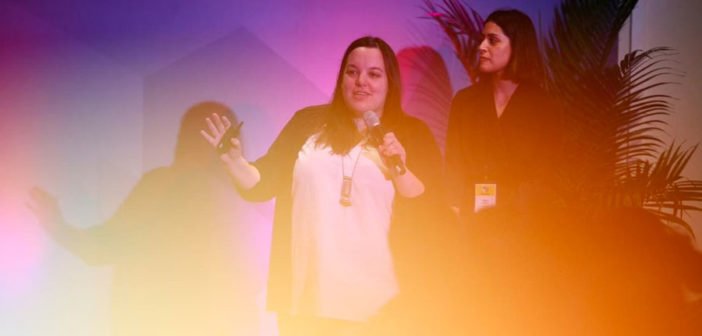To solve large systemic issues, the social equity nonprofit Ideo.org follows these three steps.
According to the United Nations, there are over 65 million forcibly displaced people worldwide. It’s the rough equivalent of the United Kingdom’s entire population.
“From the Mediterranean to Berlin, Athens, East Africa, and right here in New York City, people are on the move in a way that we’ve never really seen before,” Shauna Carey, a managing director in Ideo.org’s New York office, says during a Fast Company Innovation Festival Workshop last week. “We hear about how this is a global crisis, but as designers we want to talk about how it’s actually an opportunity.”
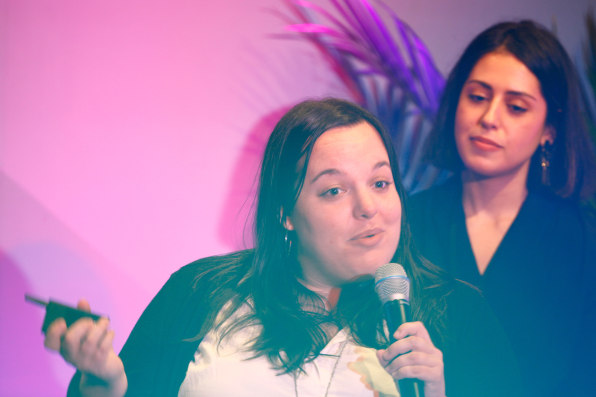
At Ideo.org–a nonprofit organization that works to improve the livelihood of people living in poverty–the refugee crisis has been an especially urgent issue and one that Carey and her team have been working on for years through projects like bringing reproductive health services to women displaced by conflict or disaster and improving the reading skills of Syrian refugees.
“Becoming a refugee is the ultimate act of human resilience, but the language as-is frames it as a burden on society,” Carey says. “We want to unleash their potential to add to society–and use design to do that. . . . How do we start to use research and human-centered design to understand people behind the statistics and create solutions deserving of their stories?”
At the Fast Company Innovation Festival, Carey explains Ideo.org’s problem-solving framework to systemic problems, like the refugee crisis, and it involves these three steps.
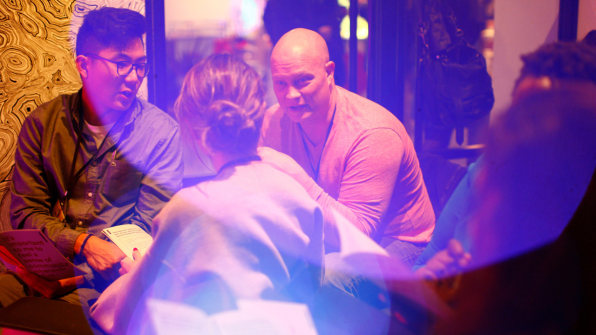
1. WIELD OPTIMISM
Ideo.org’s first tool is adopting a bias for action through optimism. “We like to think about optimism as an active verb,” Carey says. “It’s not just a mind-set; it’s a way of working. Anyone can name a problem, but it’s harder to solve a problem. When we turn challenges into questions, it becomes something we can solve . . . Questions are inherently optimistic.”
So how does this play out in practice? Carey cites an example about refugees seeking employment in their host countries. They often lack the proper paperwork and aren’t able to earn an income. While they wait for documentation, they miss opportunities.
“It’s real people whose potential is being squandered,” she says. “When you look at it from another angle, we see opportunities. How can we create remote employment opportunities that allow refugees to make a living while they wait? Paperwork doesn’t have to be the way to employment.”
Questioning what’s hindering employment–paperwork, in this scenario–and thinking about how to work around this problem opens up a new line of thinking about potential solutions.
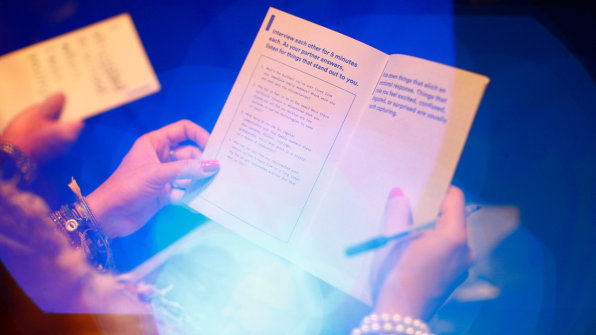
2. EXERCISE EMPATHY
To Ideo.org, the ultimate question is how to design for people. The organization believes that truly understanding the unique conditions of a community and empathizing with them unlocks ideas for how to help solve their problems or challenges.
During the workshop, Ideo.org passed out booklets with interview questions–like, “Tell me about your education, from preschool to today?” and “Was there ever a time in life where you had to learn a new skill or language from scratch? How did you do it?”–and invited attendees to pose the questions to one another. Then, they noted how the responses made them feel. The goal of the exercise was to spark empathy between the individuals.
The questions’ theme related to the second part of the exercise: developing ideas for a problem facing refugees. In this case it was,”How might we help children overcome psychosocial trauma and educational gaps to succeed in school?” The booklet also included a first-person narrative about a Congolese refugee, who speaks Swahili and French, now living in a refugee camps in Uganda where the teachers speak English. By noting how the individual in the story felt, what challenges she expressed, and what she wanted–similar core questions as the first part of the workshop–designers can then come up with ideas to help.
“When we start by listening, the toughest challenges seem surmountable,” Aya Jaffar, a communication designer at Ideo.org, says. “People’s stories hold clues to things we didn’t know and we can design for those clues.”
Recently, Jaffar worked on a project to retrofit informal slum housing in the Philippines to make the neighborhoods more resilient in natural disasters. She and her team struggled to get people to implement the retrofits, like reinforcing structures. But by speaking with community members they learned that many of them were ex-military and that everyone listens to their priest’s suggestions. Working with the local priests, Jaffar and her team were able to convince people to welcome the retrofits. Jaffar was also able to frame the project’s values through the military culture of honor and service to fellow citizens, which helped speed up implementation.
“Tapping into the values of a community as a way to understand them and help design for them is what we try to do as designers,” Jaffar says.
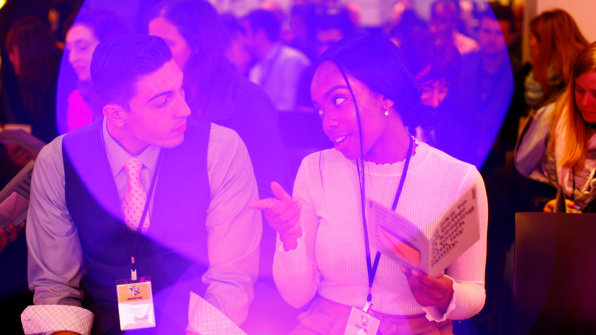
3. COLLABORATE
“We find at Ideo.org that collaboration is the most important tool to make progress,” Carey says. “Complex challenges require creative solutions, and we can’t solve them with one set of tools. Combining our expertise with others helps us move beyond known solutions and uncover new possibilities.”
Carey often partners with other nonprofits, governments, data scientists, and business leaders on design projects. Ideo.org, along with the American Refugee Committee (ARC), recently worked on a project to bring clean water to people in the Democratic Republic of Congo. Talking with a group of women in the community revealed that they were deeply distrustful of nonprofits offering anything for free, so Ideo.org and the ARC worked on developing a business model that could provide clean water to people who are living on $2 to $3 a day. This led to Asili, a community-run business.
“If we had trusted our own intuition and just did something that was fast or we knew how to do, we would’ve missed an opportunity to do something that people trusted and cared about and has a brand to it,” Carey says.
Ideo.org didn’t know how to set up a business to make the community’s desire of having a self-sufficient business around water, but through collaborating with ARC, it was able to deliver a solution. Asili has provided 25,000 people with clean water and plans to grow its customer base to 40,000.
“If we’re in service of a question and we’re listening, someone will tell us what they want and it’s our job to figure out how to [execute]it,” Carey says. “Designers, as we practice design, aren’t in the business of telling a community what it should be; it’s asking them what would you like it to be? It’s exploring that and making it real in whatever way we can using our skills. What I love about design and how we practice it–call it human-centered design or design thinking–is it takes the pressure off. I don’t have to know the answer. I have to be a great listener and work my ass off to make that happen.”
–
This article first appeared in www.fastcodesign.com
Seeking to build and grow your brand using the force of consumer insight, strategic foresight, creative disruption and technology prowess? Talk to us at +9714 3867728 or mail: info@groupisd.com or visit www.groupisd.com

